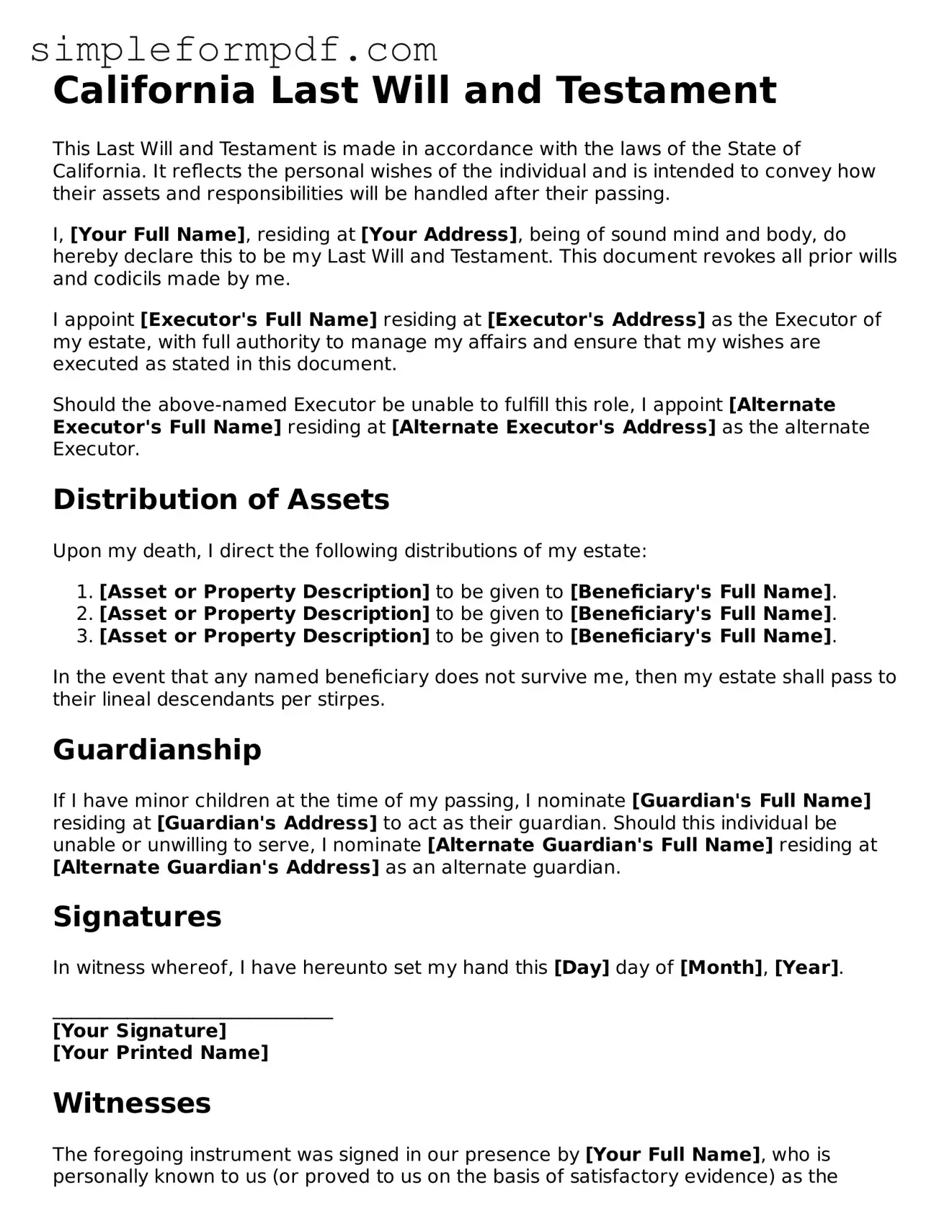California Last Will and Testament
This Last Will and Testament is made in accordance with the laws of the State of California. It reflects the personal wishes of the individual and is intended to convey how their assets and responsibilities will be handled after their passing.
I, [Your Full Name], residing at [Your Address], being of sound mind and body, do hereby declare this to be my Last Will and Testament. This document revokes all prior wills and codicils made by me.
I appoint [Executor's Full Name] residing at [Executor's Address] as the Executor of my estate, with full authority to manage my affairs and ensure that my wishes are executed as stated in this document.
Should the above-named Executor be unable to fulfill this role, I appoint [Alternate Executor's Full Name] residing at [Alternate Executor's Address] as the alternate Executor.
Distribution of Assets
Upon my death, I direct the following distributions of my estate:
- [Asset or Property Description] to be given to [Beneficiary's Full Name].
- [Asset or Property Description] to be given to [Beneficiary's Full Name].
- [Asset or Property Description] to be given to [Beneficiary's Full Name].
In the event that any named beneficiary does not survive me, then my estate shall pass to their lineal descendants per stirpes.
Guardianship
If I have minor children at the time of my passing, I nominate [Guardian's Full Name] residing at [Guardian's Address] to act as their guardian. Should this individual be unable or unwilling to serve, I nominate [Alternate Guardian's Full Name] residing at [Alternate Guardian's Address] as an alternate guardian.
Signatures
In witness whereof, I have hereunto set my hand this [Day] day of [Month], [Year].
______________________________
[Your Signature]
[Your Printed Name]
Witnesses
The foregoing instrument was signed in our presence by [Your Full Name], who is personally known to us (or proved to us on the basis of satisfactory evidence) as the person who executed this instrument, and we, being of legal age, in the presence of each other, have subscribed our names as witnesses.
- ______________________________
[Witness 1 Signature]
[Witness 1 Printed Name], residing at [Witness 1 Address]
- ______________________________
[Witness 2 Signature]
[Witness 2 Printed Name], residing at [Witness 2 Address]
